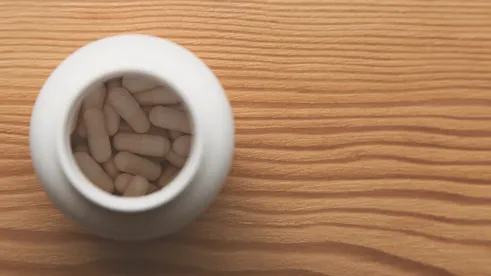When a bulk container of vitamins tore and began to leak, it set into motion an unforeseen chain of events — beginning with the injury of Martin Cassidy and ending with an increased risk of strict liability for distributors of allegedly defective products.
In an Illinois strict product liability action, the court must dismiss a distributor once that distributor certifies the identity of the product’s manufacturer. Previously, a plaintiff seeking to vacate such a dismissal order — to reinstate the distributor as a defendant — had to show that the manufacturer was “bankrupt or nonexistent.” Cassidy v. China Vitamins, LLC rejected that rule.[1]The court held instead that the distributor could be reinstated as a defendant if the “plaintiff can establish other circumstances that effectively bar recovery of the full measure of judgment damages” from the manufacturer.
What are these other circumstances? The court declined to say, leaving it up to distributors, manufacturers, their counsel, and trial courts to attempt to define them.
Striking the Balance: The “Seller’s Exception” in Illinois
Illinois reallocates losses from injured plaintiffs to both the entities that create products and the entities that benefit from the sale of those products. However, acknowledging the harshness of holding passive distributors strictly liable for defects of their suppliers’ products, Illinois created a “Seller’s Exception.”[2]
This exception requires courts to dismiss a nonmanufacturer defendant after that defendant has certified the identity of the manufacturer responsible and the plaintiff has filed suit against that manufacturer. But to ensure plaintiffs do not go uncompensated, courts may reinstate a previously dismissed nonmanufacturer defendant if the plaintiff proves that “the manufacturer is unable to satisfy any judgment as determined by the court.”
What Happened in Cassidy
Martin Cassidy sued New Jersey distributor China Vitamins for injuries he sustained when one of its bulk vitamin containers tore and leaked, causing overhead product to topple down onto him. In response, China Vitamins certified the identity of the container’s manufacturer: the China-based Taihua Group. Cassidy then filed suit against Taihua Group, and the court dismissed China Vitamins. Five months later, Cassidy won a $9.1 million default judgment against Taihua Group. But Taihua Group did not pay.
Over the next two years, Cassidy made several failed attempts to collect from Taihua Group. Seeking to discover assets, he issued a citation, which was later quashed due to improper foreign service. Cassidy followed that with a few third-party citations, but these were also ineffective in enforcing the judgment.
Having failed to collect from Taihua Group, Cassidy moved to reinstate China Vitamins as a defendant. The trial court initially granted his motion, but later vacated the order because it found Cassidy “had not met the statutory reinstatement requirements.” Cassidy appealed.
On appeal, China Vitamins argued that it should not be reinstated as a defendant because Taihua Group was neither bankrupt nor nonexistent. A divided appellate court declined to apply this “bankrupt or nonexistent” standard. China Vitamins appealed to the Illinois Supreme Court.
There, China Vitamins argued that the sole focus should be on the manufacturer’s ability to satisfy the judgment — not on the plaintiff’s ability to enforce the judgment. Otherwise, it argued, a plaintiff who fails to enforce a judgment against a manufacturer (which may have assets to satisfy the judgment) could still move to reinstate a passive distributor. The court disagreed. Without defining them, the court read into the statute “a broader range of factors” than just bankruptcy or nonexistence that could be used “to determine if a manufacturer is ‘unable to satisfy’ the judgment against it.” Cassidy could now draw from this “broader range of factors” to prove that other circumstances effectively barred his recovery. And if he could prove that, his motion to reinstate China Vitamins as a defendant would be granted.
Cassidy’s attempts to collect, however, failed to convince the court that he had carried his burden. The court noted Taihua Group’s global presence as a going concern and hinted at the avenues available to Cassidy for collection. After rejecting the “bankrupt or nonexistent” standard without replacing it, the court sent the case back to the trial court to determine whether Taihua Group was “unable to satisfy a judgment.”
Key Takeaways for Operating in a Post-Cassidy Illinois
Ultimately, this decision reshapes the legal landscape in which distributors and manufacturers operate. The once-clear path for distributors to avoid strict liability is now overgrown with uncertainty. Like a compass, the following points can provide some reference when navigating business in a post-CassidyIllinois.
Although “other circumstances” could theoretically include a healthy but elusive manufacturer’s flat-out refusal to pay, it is unlikely. In Minnesota, which has a similarly worded Seller’s Exception, the most common reasons for distributor reinstatement remain manufacturer bankruptcy and nonexistence.
Distributors may want to revisit agreements with manufacturers — especially those located outside the reach of U.S. courts — to ensure that contractual provisions manage risk adequately. Distributors might ask manufacturers for an overlapping combination of notice before significant operational changes, indemnity from strict liability, and detailed, minimum liability insurance coverage that allows direct recourse to an insurer for products liability claims.
Insurance required of manufacturers should be sufficient to cover reasonably sizeable judgments, if possible. For example, a court applying Minnesota’s exception reinstated a distributor even after it showed that an insolvent manufacturer possessed liability insurance because it was unclear whether the insurance would satisfy the judgment.[3]
Distributors facing reinstatement should remember that plaintiffs carry the burden of proving that the manufacturer is unable to satisfy the full judgment. But while the plaintiff shoulders this burden, distributors should still stay informed of their manufacturers’ financial well-being. If the manufacturer is an ongoing business, the Illinois Supreme Court has hinted that there may be ways for the plaintiff to collect. And if a plaintiff can collect from the manufacturer, courts are unlikely to reinstate a distributor as a defendant.
* James Cromley is a third-year law student at Arizona State University and a 2019 summer associate at Schiff Hardin LLP. This article was authored under the supervision of Malerie Ma Roddy.
[1] 120 N.E.3d 959, 972 (Ill. 2018).
[2] 735 ILCS 5/2-621(b).
[3] Finke v. Hunter’s View, Ltd., 595 F. Supp. 2d 1254, 1271 (D. Minn. 2009).



 />i
/>i

